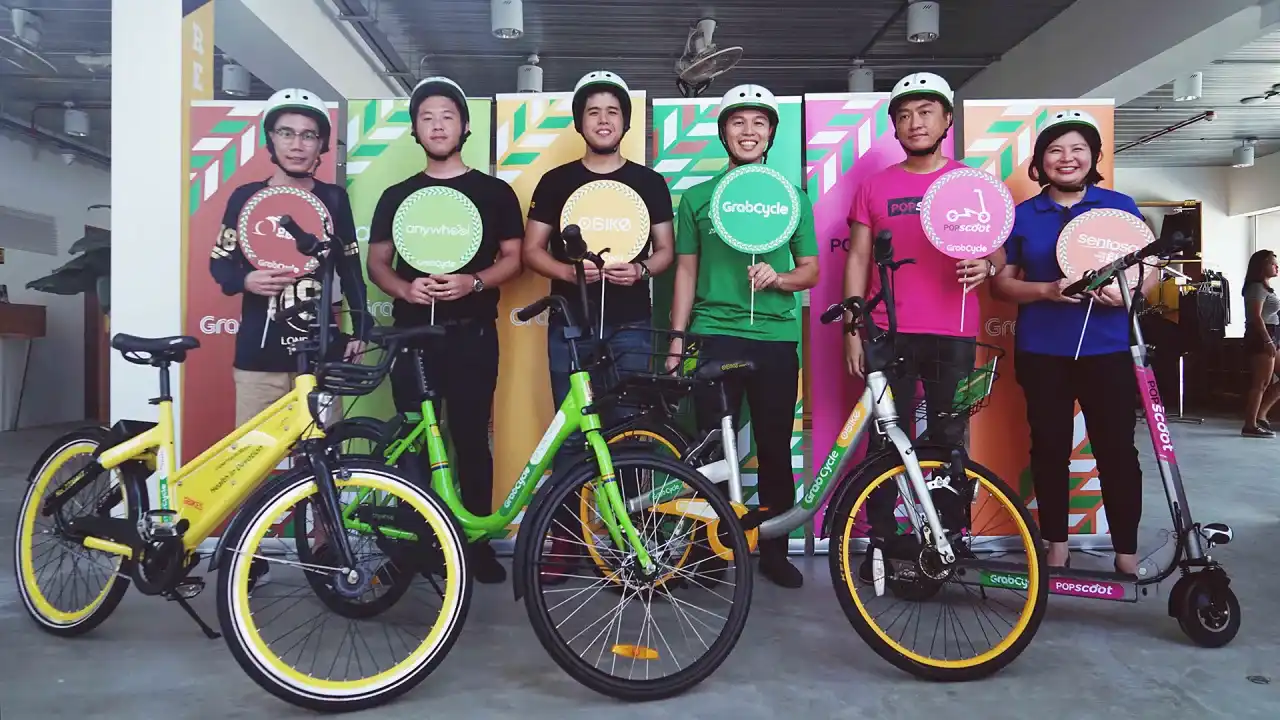Bike Sharing Programs City Guide
A city guide to bike-sharing programs, promoting sustainable urban transportation. Discover convenient and eco-friendly ways to explore cities. Reduce congestion and emissions with bike-sharing initiatives.

Bike Sharing Programs An Overview of Eco-Friendly Urban Mobility
So, you're thinking about ditching the car and hopping on a bike? Awesome! Bike-sharing programs are popping up everywhere, and they're a fantastic way to get around cities while being kind to the planet. They offer a flexible, affordable, and surprisingly fun way to explore, commute, or just run errands. Forget about parking headaches, traffic jams, and those pesky carbon emissions. Bike sharing is here to save the day (and the planet!).
Why Choose Bike Sharing Sustainable Benefits for Cities and You
Why should you even consider bike sharing? Let's break it down:
- Eco-Friendly: Obvious, right? Bikes don't pollute. Period. You're actively reducing your carbon footprint.
- Convenient: Stations are usually located in high-traffic areas, making it easy to grab a bike when you need one.
- Affordable: Often cheaper than public transport or ride-sharing, especially for short trips.
- Healthy: Get some exercise while you're at it! It's a great way to incorporate physical activity into your daily routine.
- Reduces Congestion: More bikes, fewer cars. It's a win-win for everyone.
How Bike Sharing Works A Step-by-Step Guide for New Users
Okay, so how do you actually use these programs? It's usually pretty straightforward:
- Sign Up: Most programs require you to register online or through an app. You'll usually need to provide some personal information and payment details.
- Find a Bike: Use the app to locate a nearby bike station with available bikes.
- Unlock a Bike: This usually involves scanning a QR code on the bike or entering a code into a keypad.
- Ride!: Enjoy your ride! Be sure to follow traffic laws and wear a helmet (if required or recommended).
- Return the Bike: Find an available dock at a designated station and securely lock the bike. The app will confirm that the bike has been returned.
Bike Sharing Program Types Docked vs Dockless Systems Explained
There are two main types of bike-sharing programs:
- Docked Systems: These systems have designated stations where bikes must be picked up and returned. They're generally more organized and easier to manage.
- Dockless Systems: These systems allow you to pick up and drop off bikes almost anywhere within a designated zone. They're more flexible but can sometimes lead to bikes being left in inconvenient locations.
Top Bike Sharing Programs USA Recommendations and Comparisons
Let's take a look at some of the most popular bike-sharing programs in the USA:
- Citi Bike (New York City, Jersey City): One of the largest and most established programs. Great for commuting and exploring the city. Annual memberships are available, as well as day passes. Expect to pay around $25/month for a membership or $3.99 for a single ride.
- Divvy (Chicago): Another popular program with a wide network of stations. Ideal for getting around the Windy City. Membership costs around $108 annually, or $16 for a day pass.
- Capital Bikeshare (Washington, D.C., Arlington, Alexandria): A great option for exploring the nation's capital and surrounding areas. Annual memberships are about $95, or you can grab a single trip for around $2.
- Bay Wheels (San Francisco Bay Area): Perfect for exploring the Bay Area. They offer both classic and electric bikes. A monthly membership is around $30, or you can pay per ride.
Bike Sharing Southeast Asia Options Exploring Urban Centers Sustainably
Bike sharing is also gaining popularity in Southeast Asia:
- oBike (Singapore, Malaysia, Thailand, etc.): While oBike had some issues in the past, other dockless systems have emerged to fill the gap. Look for local providers in each city.
- Anywheel (Singapore): A dockless option in Singapore that is trying to make a name for itself.
- Local Initiatives: Many cities have their own local bike-sharing initiatives. Do some research to find programs specific to the city you're visiting.
Product Spotlight Specific Bike Recommendations and Usage Scenarios
While you don't typically *own* the bike in a bike-sharing program, let's talk about some general bike types you might encounter and their suitability:
Typical Bike Sharing Bike Sturdy and Reliable
Description: These are your standard, durable bikes designed for city riding. They usually have a comfortable seat, upright riding position, and integrated lights.
Usage Scenario: Perfect for short commutes, running errands, or exploring the city at a leisurely pace.
Example: Think of the classic Citi Bike or Divvy bike. They're not fancy, but they get the job done.
Electric Bikes (E-Bikes) Pedal Assist for Easier Rides
Description: E-bikes provide pedal assist, making it easier to climb hills and cover longer distances. They're a great option for those who want a little extra help.
Usage Scenario: Ideal for commuting in hilly areas, covering longer distances, or if you just want a more relaxed ride.
Example: Many bike-sharing programs, like Bay Wheels, offer e-bike options. They usually cost a bit more per ride.
Cargo Bikes Carrying Goods with Ease
Description: Some programs are starting to offer cargo bikes, which have a basket or platform for carrying groceries, packages, or even small children.
Usage Scenario: Perfect for running errands or transporting goods around the city.
Example: Look for specialized bike-sharing programs that cater to families or businesses.
Bike Sharing Safety Tips Staying Safe While Riding
Safety first! Here are some tips to stay safe while using bike-sharing programs:
- Always Wear a Helmet: Even if it's not required by law, protect your head.
- Check the Bike: Before you ride, make sure the brakes are working, the tires are inflated, and the seat is adjusted properly.
- Follow Traffic Laws: Obey traffic signals, signs, and lane markings.
- Be Visible: Wear bright clothing and use lights, especially at night.
- Be Aware of Your Surroundings: Pay attention to cars, pedestrians, and other cyclists.
Bike Sharing Environmental Impact Quantifying the Benefits
Let's talk numbers. Bike sharing significantly reduces:
- Carbon Emissions: Replacing car trips with bike trips reduces greenhouse gas emissions.
- Air Pollution: Fewer cars mean cleaner air.
- Traffic Congestion: More bikes mean less traffic.
- Noise Pollution: Bikes are much quieter than cars.
Studies have shown that bike-sharing programs can have a significant positive impact on urban environments.
Bike Sharing Future Trends and Innovations in Urban Mobility
The future of bike sharing is bright! Here are some trends to watch out for:
- Expansion of E-Bike Fleets: More and more programs are adding e-bikes to their fleets.
- Integration with Public Transport: Seamless integration with other modes of transport, such as buses and trains.
- Smart Bike Technology: Bikes with GPS tracking, integrated locks, and other smart features.
- Data Analytics: Using data to optimize bike distribution and improve the overall user experience.
Bike Sharing Alternatives Considering Other Sustainable Transportation Options
Bike sharing isn't the only sustainable transportation option. Consider these alternatives:
- Walking: The most eco-friendly option of all!
- Public Transport: Buses, trains, and subways are a great way to reduce your carbon footprint.
- Electric Scooters: Similar to bike sharing, but with scooters.
- Ride Sharing (with Electric Vehicles): If you need to drive, opt for an electric vehicle.
Bike Sharing Addressing Common Concerns and Challenges
Bike sharing isn't without its challenges:
- Vandalism and Theft: Bikes can be targets for vandalism and theft.
- Bike Availability: Sometimes it can be difficult to find an available bike or dock.
- Maintenance: Bikes need regular maintenance to keep them in good working order.
- Safety Concerns: Some people are concerned about safety, especially in areas with heavy traffic.
However, bike-sharing programs are constantly working to address these challenges and improve the overall experience.
:max_bytes(150000):strip_icc()/277019-baked-pork-chops-with-cream-of-mushroom-soup-DDMFS-beauty-4x3-BG-7505-5762b731cf30447d9cbbbbbf387beafa.jpg)






